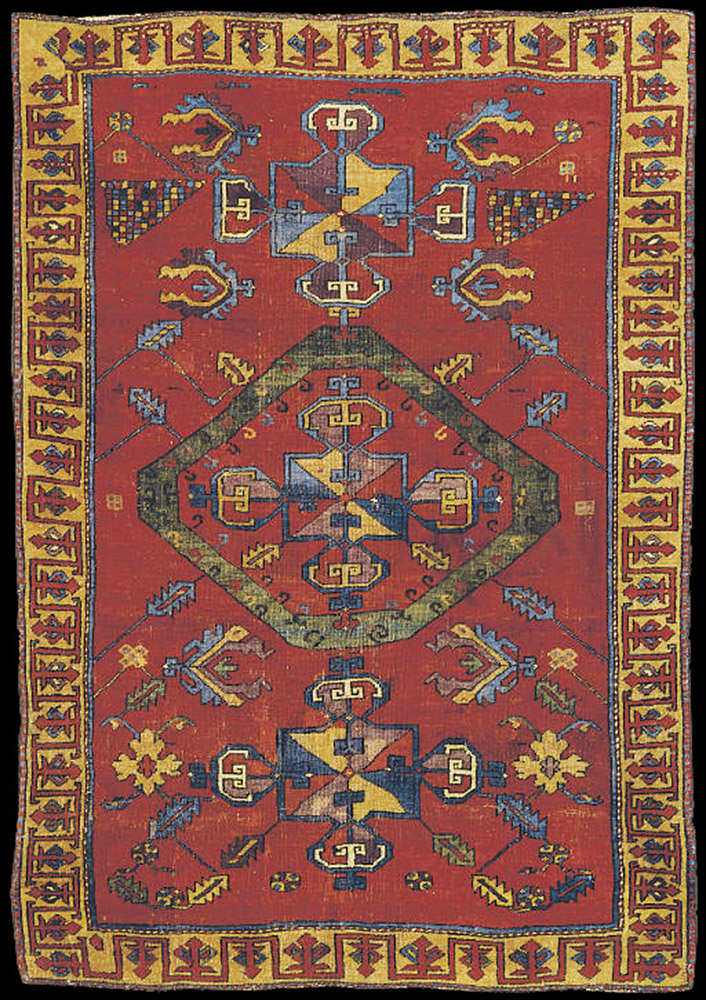|
AN EAST ANATOLIAN OR NORTH WEST PERSIAN RUG
LATE 17TH OR EARLY 18TH
CENTURY
Price Realized £29,300 ($57,809)
Sale Information
Christie's SALE 7572 —
ORIENTAL RUGS AND CARPETS
10 April
2008
London, King Street
Lot Description
AN EAST ANATOLIAN OR NORTH WEST PERSIAN RUG
LATE
17TH OR EARLY 18TH CENTURY
Areas of wear, small patches of repair and
repiling, selvages rebound, ends secured
5ft.4in. x 4ft.9in. (163cm. x
145cm.)
Provenance
"A Berlin Museum", as noted by Jacoby in his catalogue
Heinrich Jacoby, Berlin, by 1922
Literature
Heinrich Jacoby, Eine Sammlung Orientalischer Teppiche,
Leipzig, 1922, pl.20.
Christopher Alexander, A Foreshadowing of 21st
Century Art, New York and Oxford, 1993, pp.136-137
Lot Notes
This rug, of venerable pedigree, defies easy categorisation. From a
photograph it appears to be straightforward, a slightly provincial
rendering of a 16th century village rug, but still retaining enough of the
original spirit and colouring, and without a plethora of small motifs, and
thus probably dateable to the seventeenth century. But the real surprise
is that the warps are of white cotton which is never a normal feature of
Anatolian vilage rugs of the 17th century. When he published the rug in
1922, Heinrich Jacoby described it as a South Caucasian Carpet and dated
it to the 18th/19th century. He comments "were it not for the very early
border design we would place it at a maximum of 50 years old". Every
indication is that he was being unduly harsh on his own rug as most of the
motifs are known in the 16th and 17th century.
The motif in the
central medallion originated in early Ushak carpets; in his publication of
this lot Professor Alexander reproduces an example from a 16th century
Ushak carpet in the McMullen Collection. Like many motifs it had a long
life and can be found in Konya rugs dating to the 17th/18th centuries (E
Heinrich Kirchheim et al., Orient Stars, A Carpet Collection, Stuttgart
and London, 1993, nos.133 and 134, pp.208-9). The border is a very ancient
one, relating to that of lot 109 in the sale, but without the diagonals or
the secondary floral motifs. One feature however that only comes in in the
eighteenth century is the diagonal stems emerging from the border and
terminating in leaves or floral motifs. These are found on a group of
eighteenth century central Anatolian carpets such as a yellow ground
example exhibited in Mannheim (Peter Bausback, Anatolische Knupfteppiche
aus vier Jahrhunderten, Mannheim, 1978).
 |

